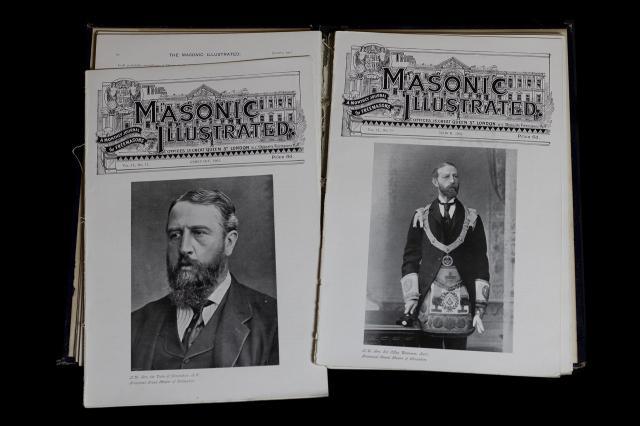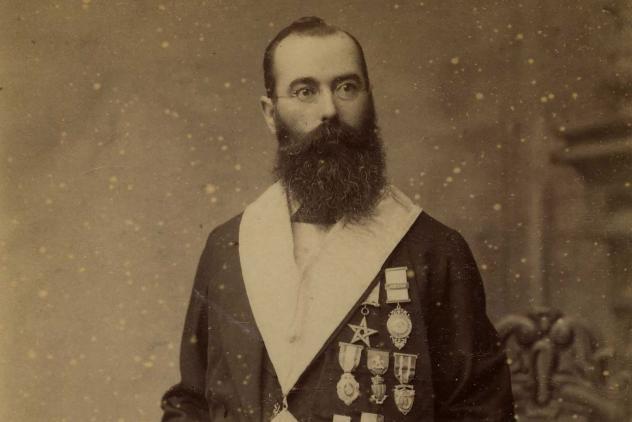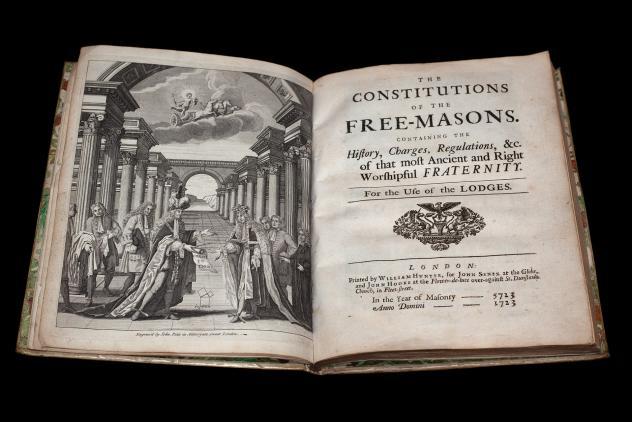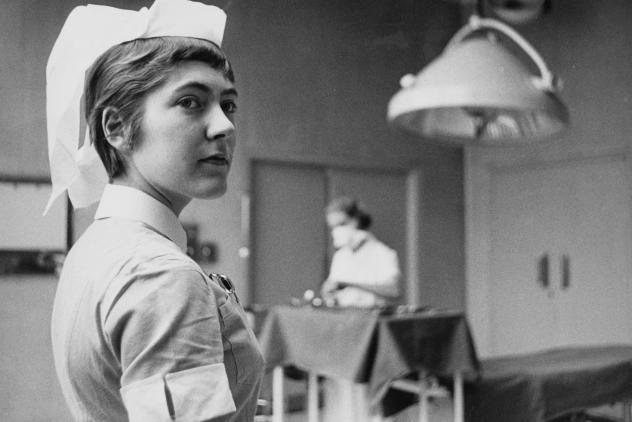We live in a world so flooded with media brands and titles it's hard to imagine a time when this wasn't the case. However there was a time when everything seemed just like this, when mass media began to take shape and publications began to speak directly to different audiences. Would you believe it was over 200 years ago? Museum of Freemasonry Archivist and Records Manager Susan Snell introduces our digital resource Masonic Periodicals Online and why you should get to know it.
What is it?
Publishers identified a new audience for popular printed magazines, known as periodicals, as freemasonry's membership numbers grew in the eighteenth-century. The first title targeted at freemasons and their families, The Freemasons’ Magazine, was printed in London in the 1790s, the equivalent to modern newsletters sent by email. It wasn’t a commercial success but paved the way for numerous later attempts. The Museum’s Masonic Periodicals Online resource includes searchable, digitised copies of fourteen English publications that appeared quarterly, monthly or weekly before 1906.
We digitised these key publications to make access to a unique resource much easier. Few complete series of these periodicals survive in libraries worldwide and few volumes have indexes. Before digitisation, searching for a report about a lodge consecration or an obituary for a well-known freemason would take me ages – now this takes minutes. Not everyone can visit the Museum in person. Masonic Periodicals Online makes it possible for anyone in the world with internet access to find information free of charge. While London is in lockdown, they are an invaluable resource for anyone seeking facts about freemasonry, the history of lodges and events of the period without needing to visit our Library.
Freemasonry and beyond
Masonic periodicals provide us with an overview of what was happening in the world of freemasonry over time. Depending on the publication, you can find out what was on at the theatre, which books to read, where to buy the latest fashions, find poems to read and what was happening in the world. You can discover details about freemasonry in specific locations, not just in England and Wales but also overseas. As well as reports about Craft and Royal Arch freemasonry, some titles include news about Mark Master Masonry and other degrees. You can search by publication title and date, or by using free text and the wild card symbol * to pin down what you want to locate. A bit of experience using trial and error search techniques can be very rewarding.
A key resource for anyone interested in the history of lodges and freemasonry, many titles include fascinating details about countless other topics. Students of architecture can find reports about new buildings, those looking into philanthropy will discover news about good causes funded by freemasons and other charities and theatre researchers can find details of entertainers to book for successful social events. The range of adverts provide an amusing glimpse of contemporary life. The Freemasons’ Chronicle in 1881, for example, offered readers’ an opportunity to purchase artificial teeth, American music stands, soda waters and seltzers. I find descriptions of dining and fashion choices, which tried to influence members about what to eat and wear, amazing – and so are the prices!
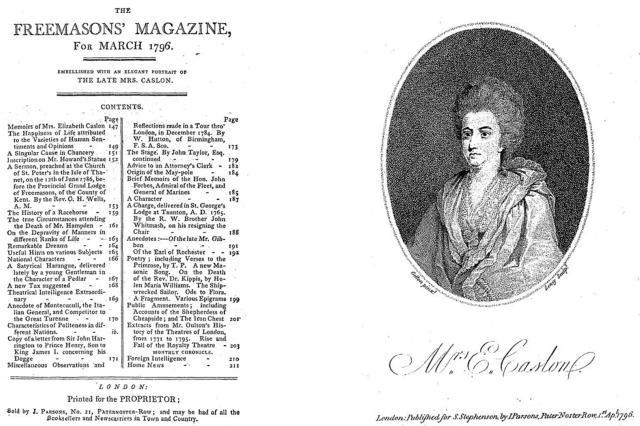
Still rewarding
In a periodical aimed at a male readership, I am fascinated by an obituary with an engraved portrait of a business-woman, Elizabeth Caslon. This was printed in The Freemason’s Magazine after her death in March 1796. Long-associated with the London type-setting trade, Elizabeth ran the family firm with the help of her daughter-in-law, also Elizabeth. The Caslon family developed the pica standard type size and Elizabeth replaced the long-s with a short-s in printed texts.
In April 1887, The Freemason mentioned details about Americans collecting ’Curiosities of the Craft’, artefacts associated with the history of freemasonry. The report notes the formation of a museum in Boston by the Grand Lodge of Massachusetts, hot on the heels of a similar move by the Grand Lodge of New York. I find it fascinating that our visitors today continue to find such curious items as interesting as they did then.
